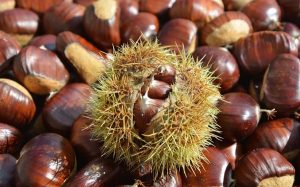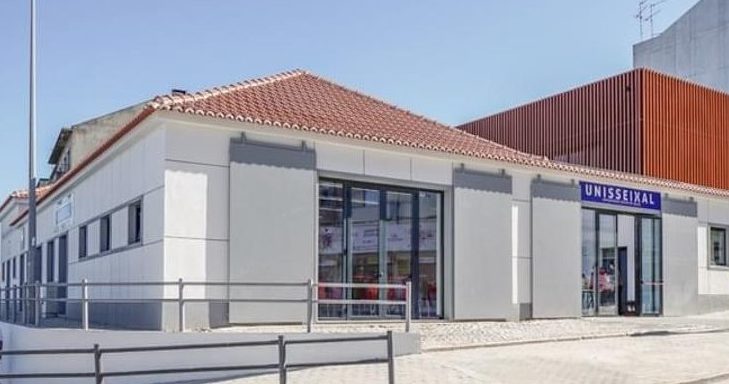 The chestnut season is officially open with the arrival of November 11th. And this São Martinho they may even arrive "hot", but certainly "less good" and also "more expensive" than last year.
The chestnut season is officially open with the arrival of November 11th. And this São Martinho they may even arrive "hot", but certainly "less good" and also "more expensive" than last year.
The reason? There are and are not chestnuts. Contradictory? Let's do it by steps. Chestnut production should even register an increase of around 15% compared to the previous year in light of projections from the National Statistics Institute (INE) which, from the perspective of the director of RefCast - Associação Portuguesa da Castanha, "should not go too far of reality." It is, however, necessary to take into account that the previous campaign was "terrible" with "a drop of around 50 to 60% compared to normal".
Estimates thus point to a harvest of between 20 and 25 thousand tons, that is, far below the 2019 "record" - of 44 thousand tons - which, even in September, was expected to be achieved. "We thought we were going to reach the record, but that's when the world collapsed on the sector", says José Gomes Laranjo, speaking to Negócios.
Two fungi, in particular one, "exchanged turns" in the chestnut groves, meaning that, despite there being more chestnuts than in the last season, there are fewer available on the market, because a considerable part has gone to waste. Afterwards, much of what is on the shelves runs the risk of reaching the consumer rotten, despite its good appearance, "without anyone acting in bad faith", says the researcher from the University of Trás-os-Montes and Alto Douro.
Chestnut septoria was one of the culprits, fueled by the weather conditions that occurred on the eve of the harvest. "The above-normal precipitation in September, associated with a very hot month, triggered the attack of this fungus which, basically, leads to an early ripening of the foliage, giving a 'signal' to the trees that they are at the end of their maturation, which causes the hedgehogs to fall." As a consequence, in many regions, such as Valpaços, sharp losses were recorded as the fruit was still developing.
But the drop in supply - especially when compared to a normal year - is mainly due to "a problem that comes from behind", which dates back to the flowering phase, but is undetectable to the naked eye, explains José Gomes Laranjo. This problem is called "phomopsis". "It is a fungus that had already contaminated the chestnut and was inside, but dormant, which later developed post-harvest, when exposed to heat, causing it to rot", explains José Gomes Laranjo.
In short: "the chestnut may have been harvested without any problem, but from the cold of the chestnut trees to the heat of the warehouses or the expenses of our homes, the fungus 'woke up'".
This is the reason why the leader of RefCast - an association that represents more than 80% of the sector (including producers, industrialists, including academic institutions and municipalities) - leaves a recommendation to lovers of the typical autumn fruit: "Chestnuts should be stored in the refrigerator, because the low temperature is important to keep the fungus dormant."
This fungus "is not noticeable from the outside" so from the time the chestnut leaves the chestnut tree until it reaches supermarket shelves it is not possible to know whether or not it is contaminated, which is why "it is with great regret that we see many consumers complaining that they bought chestnuts that are rotten inside. And rightly so, but without any bad faith on anyone's part."
Loss of production means loss of income
When compared to a so-called "normal" year, the drop in production will be "very sharp", in the order of 50 to 60%, with a corresponding impact on the income of those dedicated to chestnut cultivation. "Less than 25 thousand tons will result in losses of around 50 million euros", considering the payment to producers of 2 euros per kg, in average terms, he points out.
This year, the price paid to the producer is around 1.5 euros per kg, with this problem being taken into account when setting the price, as "a large percentage goes to waste", which immediately lowers the value.
Although it is difficult to separate the wheat from the chaff, as the popular adage goes, the industry has fungus inactivation control systems, explains José Gomes Laranjo, indicating that it separates, in the screening process, "30 or 40% on average of batches".
The director of RefCast gives a concrete example: "If you buy a ton, 40% of it is waste, leaving 600 kg of nuts and of these, depending on the batches, on average, 300 kg are of marketable size and many others go to the industry". Thus, briefly, "this could lead to prices of nuts leaving the industry ranging from 2 to 4 euros, which then increase between the industry and distribution until they reach the consumer."
A quick search for the main stores shows that a kg of chestnuts costs between 4.49 euros and 9.99 euros, depending on the size and brands and/or origins. José Gomes Laranjo attests that "there is indeed an increase compared to last year", although noting that "it is not very pronounced".
Fair price
This year the chestnut is faced with this "new problem", but the price at which it is sold to the consumer has been a focus of concern. "Chestnuts are one of the most expensive fruits. It can't be", says the director of RefCast.
"Amidst the tight margins of production and industry, those that could be those of distribution leave some questions. We are not happy with this price", he says, pointing out that, now, with the worsening of this "problem" in quality, it brings other consequences: "We run the risk of seeing consumers walking away because they are dissatisfied, which is not good for anyone and opens the door to the loss of consumption habits, which is unacceptable for a national product like chestnuts", he laments. the same person responsible.
In Portugal, 98% of the national chestnut is produced north of the Tagus, mainly in the interior, center and north of the country, with a special focus on Trás-os-Montes, where the municipalities of Bragança, Vinhais and Valpaços stand out.
Diana do Mar wrote
